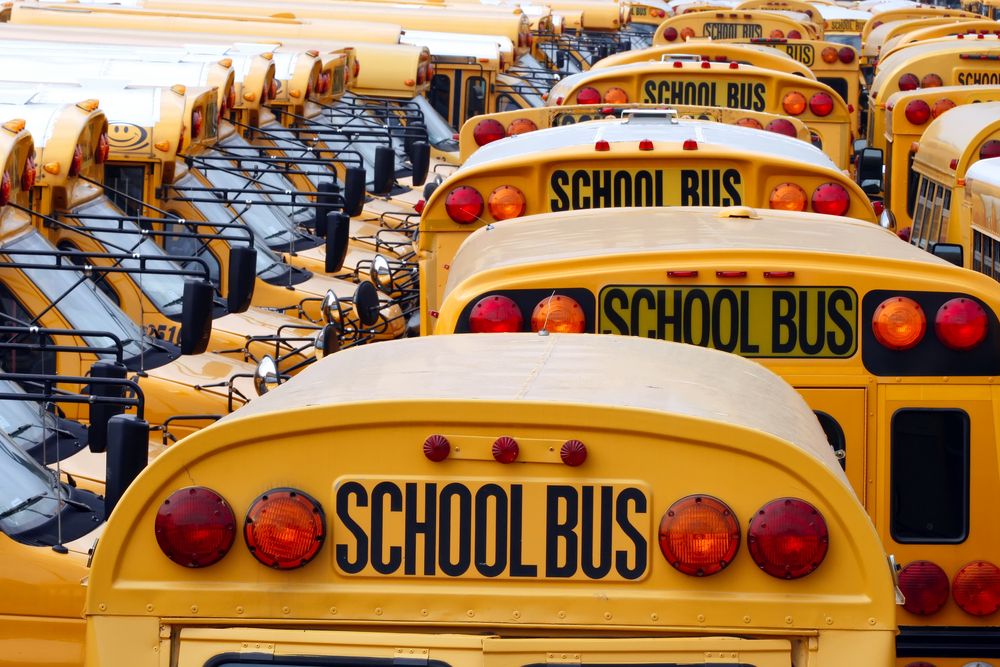What the Pandemic Has Taught Us about K-12 IT
As school districts prepare to return to classrooms this fall, it’s a good time to examine what we’ve learned during the pandemic and how to apply...
3 min read
 Craig Badrick
:
Feb 6, 2020 5:27:22 AM
Craig Badrick
:
Feb 6, 2020 5:27:22 AM
Cybercriminals have learned that schools are prime targets for ransomware attacks — don’t let your school be the next victim.
Cyber threats are a rapidly growing reality in the modern technological age. Ransomware attacks are now occurring at least once every 14 seconds, and hackers are becoming increasingly strategic about the organizations they target. This past year, there has been a spike in the number of these attacks directed at schools across the United States — more than 500 schools were hit with ransomware attacks in 2019 alone.
The unfortunate news is that it doesn’t look like ransomware attacks are going anywhere soon. A recent report highlighted that the number of ransomware attacks doubled last year, with hackers trying out new attack tactics for more lucrative payouts. While school districts will never be able to stop hackers from attempting ransomware attacks, there are a number of measures they can take to protect themselves from potential costs and damages.
Ransomware attacks typically begin when a cybercriminal gains unauthorized access to a network or to a specific computer on the network. This is often done in the form of phishing or other social engineering, which tricks a user into unintentionally installing ransomware onto their computer. The malicious software then scans a computer’s entire local hard drive, encrypting each file on it. The result is that the owner of the computer is locked out of the system and is unable to access their data.
From there, these encrypted files are held as ransom. In the case of schools, a hacker will let administrators or officials know that they are looking for a payout in exchange for the encrypted files. In order to get schools to comply, bad actors claim that they will release the lock on the files once they receive their demanded sum of money.
When planning a ransomware attack, cyber criminals tend to look for easy targets. They want victims that have large amounts of sensitive data, but also minimal cybersecurity. Schools are a prime target because their networks usually contain data that is critical to the function of the schools — and perhaps even to that of the larger community. They also have limited time and funds, which means that cybersecurity concerns are often a low priority.
A recent report on ransomware attacks in schools sheds some light on the broad impact of these incidents. For example, an attack on Wood County Schools in Parkersburg, West Virginia left teachers unable to access their desktop files and the internet-based phone systems. The school doors were also unable to open and close normally, so the physical building itself was compromised. Schools everywhere from New Jersey to California experienced similar attacks last year, taking entire districts offline and leaving educators unable to continue with planned lessons.
Nearly everything that happens in a school nowadays — internal and external communications, recording attendance, posting grades — relies at least partially on the use of computer systems and a functioning network. Given this reality, ransomware attacks on schools can have devastating consequences. Not only can the attacks be incredibly costly (even if the school is insured and declines to pay the ransom), they can also significantly disrupt the education that schools aim to provide. Concrete, tested backup plans are critical for schools to be able to conduct business as usual in the aftermath of such an event.
To avoid falling victim to a ransomware attack, schools must not leave themselves as vulnerable as hackers believe they are. That’s why it’s so important that schools invest in cybersecurity, engage in regular staff and student cybersecurity awareness training, and create an incident response team for these types of events. By doing so, schools not only reduce the likelihood of a successful ransomware attack, they also mitigate the damage if an attack takes place.
But despite the relentless nature of cyber threats, it can be hard to keep up with cybersecurity when your top priority is providing a quality education. A partnership with Turn-key Technologies, Inc. (TTI) is a great way to ensure your cybersecurity measures are working overtime to protect your data — so your school can focus on its students.
TTI has nearly 30 years of professional experience designing, installing, and securing K-12 school district networks against cybersecurity threats. We’ve worked with school districts like Pennsylvania’s Octorara Area to implement a security-first infrastructure, and we’re prepared to work with your district to find the right solution for you. In this time of heightened risk, TTI makes an excellent partner for schools looking to keep themselves protected.

As school districts prepare to return to classrooms this fall, it’s a good time to examine what we’ve learned during the pandemic and how to apply...

Catalytic converter thefts are on the rise, but smart cameras can help keep your buses secure.

The E-rate program has helped countless K-12 schools afford telecommunications services and Internet access. However, there are still a few necessary...